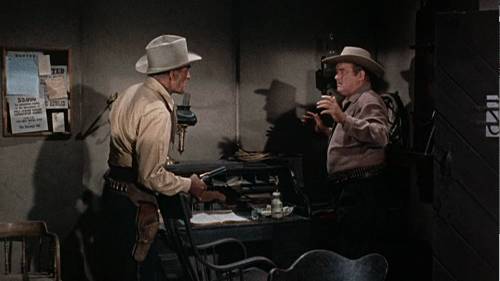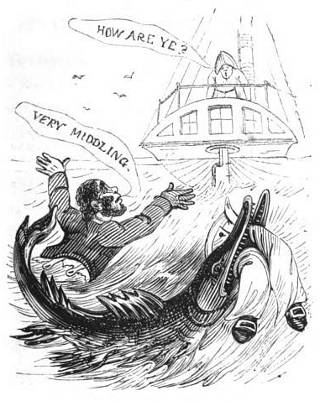
In central Panama, the sun rises in the Pacific and sets in the Atlantic.

In central Panama, the sun rises in the Pacific and sets in the Atlantic.
Hallucinations reported in a 1955 study of alcohol withdrawal in which subjects were allowed to drink heavily for up to 87 days, then abruptly cut off:
Somewhat related — from a sleep-deprivation study in 1965:
Isbell, H., et al. “An Experimental Study of the Etiology of Rum Fits and Delirium Tremens.” Quarterly Journal of Studies on Alcohol 16, no. 1 (March 1955): 1-33.
Ross, John J. “Neurological Findings After Prolonged Sleep Deprivation.” Archives of Neurology 12, no. 4 (April 1, 1965): 399–403.
(Thanks, Bob and Patrick.)

“I wouldn’t say when you’ve seen one western you’ve seen the lot, but when you’ve seen the lot you get the feeling you’ve seen one.” — Katharine Whitehorn

I drove this car 20,000 miles and used five tires equally in accumulating the mileage. How many miles’ wear did each tire sustain?

“Guess whose birthday it is today?” Franklin Pierce Adams asked Beatrice Kaufman.
“Yours?” she guessed.
“No, but you’re getting warm,” he said. “It’s Shakespeare’s!”

“Oh! what is that comes gliding in,
And quite in middling haste?
It is the picture of my Jones,
And painted to the waist.
“It is not painted to the life,
For where’s the trowsers blue?
Oh Jones, my dear!–Oh dear! my Jones,
What is become of you?”
“Oh! Sally dear, it is too true,–
The half that you remark
Is come to say my other half
Is bit off by a shark!
“Oh! Sally, sharks do things by halves,
Yet most completely do!
A bite in one place seems enough,
But I’ve been bit in two.
“You know I once was all your own,
But now a shark must share!
But let that pass–for now, to you
I’m neither here nor there.”
“Alas! death has a strange divorce
Effected in the sea,
It has divided me from you,
And even me from me!
“Don’t fear my ghost will walk o’ nights
To haunt, as people say;
My ghost can’t walk, for, oh! my legs
Are many leagues away!
“Lord! think when I am swimming round,
And looking where the boat is,
A shark just snaps away a half,
Without ‘a quarter’s notice.’
“One half is here, the other half
Is near Columbia placed;
Oh! Sally, I have got the whole
Atlantic for my waist.
“But now, adieu–a long adieu!
I’ve solved death’s awful riddle,
And would say more, but I am doomed
To break off in the middle!”
— Thomas Hood, “Sally Simpkin’s Lament,” 1834
Fritz Zwicky referred to his colleagues at the Mount Wilson Observatory as “spherical bastards” because they were bastards whichever way one looked at them.

Giuseppe Verdi received this letter in May 1872:
Much-honoured Signor Verdi, — The 2nd of this month I went to Parma, drawn there by the sensation made by your opera Aida. So great was my curiosity, that one half-hour before the commencement of the piece, I was already in my place, No. 120. I admired the mise en scène, I heard with pleasure the excellent singers, and I did all in my power to let nothing escape me. At the end of the opera, I asked if I was satisfied, and the answer was ‘No.’ I started back to Reggio, and listened in the railway carriage to the opinions given upon Aida. Nearly all agreed in considering it a work of the first order.
I was then seized with the idea of hearing it again, and on the 4th I returned to Parma; I made unheard-of efforts to get a reserved seat; as the crowd was enormous, I was obliged to throw away five liri to witness the performance in any comfort.
I arrived at this decision about it: it is an opera in which there is absolutely nothing which causes any enthusiasm or excitement, and without the pomp of the spectacle, the public would not stand it to the end. When it has filled the house two or three times, it will be banished to the dust of the archives.
You can now, dear Signor Verdi, picture to yourself my regret at having spent on two occasions thirty-two liri; add to this the aggravating circumstance that I depend on my family, and that this money troubles my rest like a frightful spectre. I therefore frankly address myself to you, in order that you may send me the amount. The account is as follows:–
Hoping that you will deliver me from this embarrassment, I salute you from my heart.
Bertani.
My address: Bertani Prospero, Via San Domenico, No. 5
Verdi asked his publisher to reimburse the man’s expenses, except for his supper (“He might very well take his meals at home”), in return for a written acknowledgment “undertaking to hear my new operas no more, exposing himself no more to the menaces of spectres, and sparing me further traveling expenses.”
One morning in 1727, York pubkeeper Hannah Williams found that her writing desk had been opened and a sum of money stolen. As waiter Thomas Geddely disappeared at the same time, there was little doubt as to the robber.
Twelve months later, a man calling himself James Crow arrived in York and took a job as a porter. The townspeople immediately accosted him as Geddely, but he insisted that he didn’t know them, that his name was James Crow, and that he was new to York.
Williams was called for, instantly identified him as Geddely, and accused him of robbing her. The man protested his innocence before a justice of the peace but had no alibi and admitted to a history as a vagabond and a petty rogue. At the trial a servant testified that she had seen him at the robbery scene with a poker in his hand. He swore again that his name was James Crow but was convicted and executed.
Some time later Thomas Geddely was arrested in Dublin on a robbery charge. While in custody he confessed to the robbery at York. A York resident who was visiting Ireland at the time declared that the resemblance between the two men was so great “that it was next to impossible for the nicest eye to have distinguished their persons asunder.”
See Mistaken Identity.